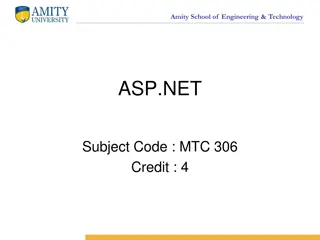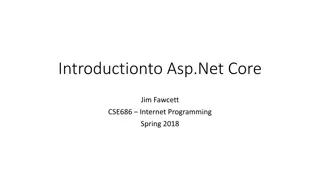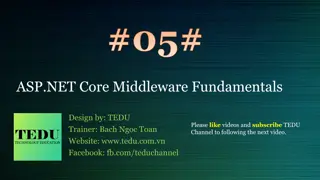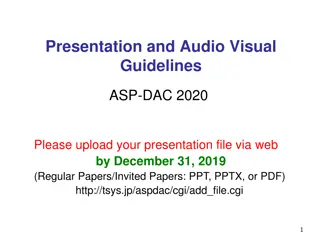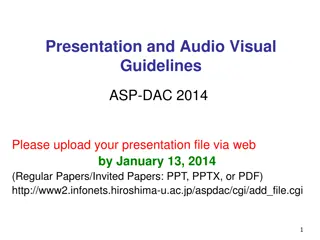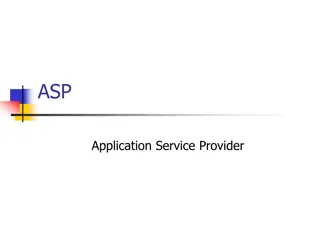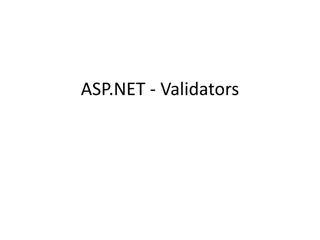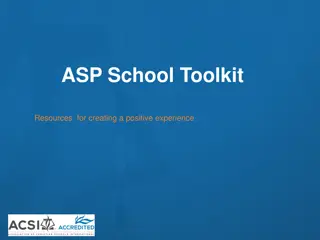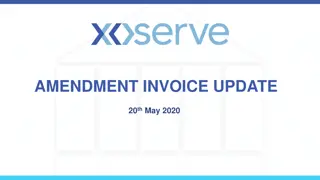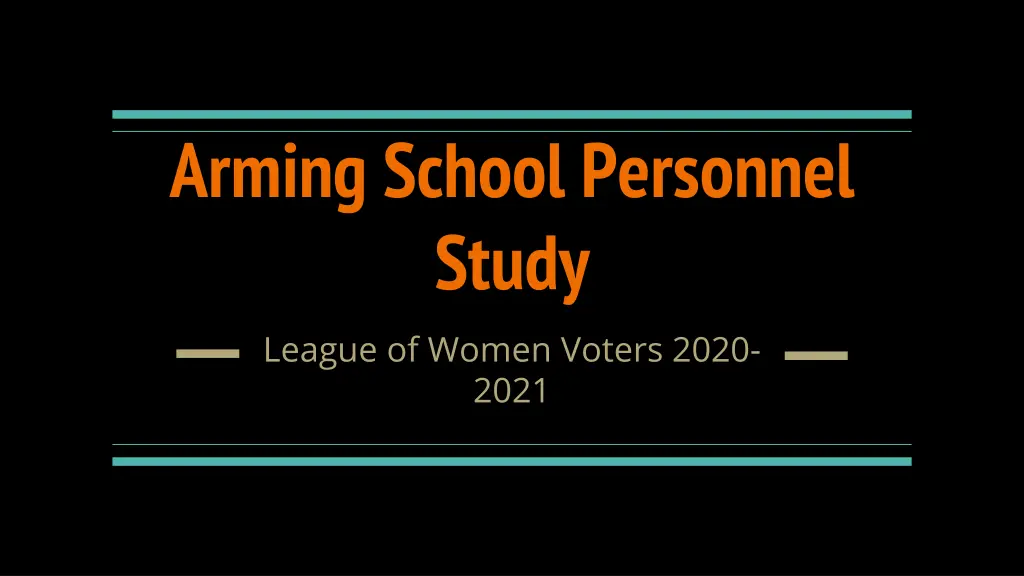
Ohio School Personnel Study League of Women Voters 2020-2021
This article discusses the League of Women Voters' study on arming school personnel in Ohio, covering topics such as decision-making, categories of study, and state involvement levels. Key points include the importance of positions and priorities, transparency in decision-making, and the impact on school safety perceptions.
Download Presentation

Please find below an Image/Link to download the presentation.
The content on the website is provided AS IS for your information and personal use only. It may not be sold, licensed, or shared on other websites without obtaining consent from the author. If you encounter any issues during the download, it is possible that the publisher has removed the file from their server.
You are allowed to download the files provided on this website for personal or commercial use, subject to the condition that they are used lawfully. All files are the property of their respective owners.
The content on the website is provided AS IS for your information and personal use only. It may not be sold, licensed, or shared on other websites without obtaining consent from the author.
E N D
Presentation Transcript
Arming School Personnel Study League of Women Voters 2020- 2021
Kent LWV All Member Meeting January 12, 2021 Agenda Welcome and Announcements Save the Dates Saturday, January 16 10:00 a.m. MLK Virtual Breakfast Saturday, February 6, 9:00 a.m. Annual Positions and Priorities Review Wednesday, February 17, 7:00 p.m. All Member Meeting Update on the Census by Kathleen Clyde
Program Arming School Personnel Study Presentation What are Positions and Priorities? Why are they important? How are studies determined?
Why are Ohio schools allowed to arm their teachers without informing the community?
Five Broad Categories of Study Decision Making - Damien Chapman Cost and Liability Beverly Timmons Armed Personnel, Checks, Training George Rose Storage Rhonda Richardson Perceptions of Safety in Schools Jill Hazelton
Decision Making 1. To what level should the state be involved? Within each school district 2. a) Who should make the decision? b) What should be the level of transparency? 3. Who should have a voice?
1. To what level should the state be involved? 1. No state involvement 2. 3. 4. 5. State mandates no district involvement
1. To what level should the state be involved? 1. No state involvement PRO CON Maximum control at the local level. Maximum expense to: research existing law craft compliant school policy NOTE: existing law may not be sufficient Maximum flexibility to craft their own customized policy. Maximum liability of each school district to law suits.
1. To what level should the state be involved? 5. State mandates no district involvement PRO CON Eliminates teachers with guns in schools. Eliminates teachers with guns in schools. Eliminates need to research laws and craft school policy. Communities have no say. Students may be considered more vulnerable. Minimizes legal liability.
Decision Making 1. To what level should the state be involved? Within each school district 2. a) Who should make the decision? b) What should be the level of transparency? 3. Who should have a voice?
2. Who decides and level of transparency? 1. School board only, no transparency 2. 3. 4. Community decision, complete transparency 5. Moot question if you oppose arming.
2. Who decides and level of transparency? 1. School board only, no transparency PRO CON This decision will not stay secret for long. Easiest and most discrete way of making the decision. Not knowing if teachers are armed may deter attacks. Fact that a secret decision was made may sow distrust and anger in the community.
2. Who decides and level of transparency? 4. Community decision, complete transparency PRO CON More expensive and complex process. Community has an actual say in the decision. If decision is no , the school may perceived as more vulnerable to an attack. People that have a very strong opinion have time to plan what they will do if they do not like the decision of the community.
Decision Making 1. To what level should the state be involved? Within each school district 2. a) Who should make the decision? b) What should be the level of transparency? 3. Who should have a voice?
3. Who should have a voice? A. Teachers B. School administrators C. All other school personnel D. School resource officers (SRO) E. Law enforcement personnel F. Students G. Parents H. Community members Yes Yes Yes Yes Yes Yes Yes Yes No No No No No No No No No Consensus No Consensus No Consensus No Consensus No Consensus No Consensus No Consensus No Consensus
Decision Making Summary: These are the aspects of this topic to consider. Use the research links provided to critically re-examine your position. Our objective is consensus.
Armed school personnel funding includes costs for training, weapons and ammunitions, as well as liability protection. District Level: Districts struggle to adequately fund on-going existing programs Districts could propose a bond specific to supporting ASP Requires support from multiple stakeholders Requires 60% of property owners to vote yes for the specific issue
Access to state and federal funds is not clear and raises political concerns Texas & Oklahoma petitioned the Dept. of Education for use of Every Student Succeeds Act funds in 2019 Then DOE director stated no authority to act on the request Congressional representatives not acting is a default yes Compromise suggested use funds for training but not for purchasing weapons Suggested use of funds to purchase weapons may be politically risky Individual states may provide funds for school safety, but typically this involves a trained officer
Professional Organizations Oppose Arming School Personnel Multiple professional education associations NEA, AFT, Assoc. of Elementary and Secondary Principals, Assoc. of Educational Psychologists Law Enforcement Agencies, FBI, Homeland Security American Academy of Pediatrics, American Bar Assoc. Arming school personnel is not supported by evidence based practice and, therefore,, these groups oppose both implementation and funding.
Groups that support gun safety within the school community Friends of the NRA have conducted fund raising events, emphasizing gun handling and safety These events sometimes occur on school property
Liability Armed personnel policies need to be clearly and carefully vetted to insure protection Some state laws protect the state but leave the BOE and armed personnel civilly and criminally liable Some states have liability caps Active shooter policies are new to insurance companies Districts join in risk groups to purchase policies
Armed Personnel, Checks, and Training
CURRENT SITUATION Arming of teachers and school staff is: Explicitly permitted in five (5) states Permitted under certain circumstances in twenty-six (26) states Ohio local school districts decide No standard training for armed teachers No federal guidelines to help states or local districts to create policies
Relevant Questions What type of firearm training should be required? Who should determine the firearm training requirements?
WHAT: Questions to consider How extensive should the training be? Who should conduct it? What happens in school systems that cannot afford training?
WHAT: Training Options CONCEAL AND CARRY PERMIT (OHIO) EIGHT (8) HOURS WITH MINIMUM OF TWO (2) HOURS OF LIVE FIRE TRAINING UN PEACEKEEPING BASIC LEVEL TRAINING: 24 HOURS FOR A BASIC LEVEL OF TRAINING (LECTURE AND PRACTICE) NOT SPECIFIC TO SCHOOL SITUATIONS POLICE FORCE FIREARMS TRAINING
WHAT: Training Options (continued) ALICE (Alert, Lockdown, Inform, Counter, and Evacuate) FOCUS ON LOCKDOWN PROCEDURES IN AN ACTIVE SHOOTER SITUATION EXPENSIVE FOR SCHOOL DISTRICTS TO IMPLEMENT AND MAINTAIN FASTER (Faculty & Administrator Safety Training and Emergency Response) MORE ACTIVE ROLE FOR TEACHERS AND SCHOOL PERSONNEL INCLUDES CRISIS MANAGEMENT AND EMERGENCY MEDICAL TRAINING PROVIDED BY BUCHEYE FIREARMS ASSOCIATION AT NO COST TO SCHOOLS
WHAT: Training Options (continued) OHIO SCHOOL BOARD ASSOCIATION (OSBA) DECISION TO ARM PERSONNEL IS RESPONSIBILITY OF THE LOCAL DISTRICT PPRR (Prevention, Preparedness, Response, Recover) OSBA S PROGRAM OF CORE COMPONENTS OF SCHOOL SAFETY AND SECURITY PROVIDES COMPREHENSIVE GUIDELINES FOR SAFETY IN SCHOOLS
WHO should make the training decision? Questions to consider: Who has the expertise to set standards and ensure they are met? Who has the knowledge to meet the specific, and perhaps unique, needs of a community?
Two major areas of consideration 1. How to store guns and ammunition for armed school personnel pros and cons of safety vs. response time 2. Consequences of student access to armed school personnel s firearm
Options for storage (pros and cons of safety vs. response time) Weapons locked or unlocked Weapons loaded or unloaded Ammunition with the gun or in a separate location Conclusion of AMA research on guns in homes: keeping weapons locked and unloaded in one location and ammunition locked away in a separate location reduces occurrence of accidental discharge and/or injury or death
Options for storage, cont. Biometric Lockboxes (e.g., touch ID or face ID technology) Research indicates these are child resistant but not child-proof Smart Guns (touch ID technology) e.g., trigger locks, magazine disconnects Research indicates these are not fool-proof Not widely manufactured Armed school personnel carry the loaded gun on their person at all times
Consequences of Student Access to Firearms: What Research Indicates When children see a gun they will show an interest, pick it up, even point and shoot Children can be taught gun safety, most effectively via rehearsal and practice with corrective feedback Time consuming and costly and not 100% effective Less effective with children younger than 5 Parents, teachers, and older peers may be able to teach kids about gun safety
Consequences of Student Access to Firearms (cont.) There is a body of research on weapons effect : Seeing photos of weapons or actual weapons increases aggressive thoughts, and hostile perceptions of others Extent to which weapons influence actual aggressive behavior is not clear No consistent gender differences Do controlled laboratory studies generalize to the school setting?
There are of 4 questions regarding perception of safety of arming school personnel Are current and purposed safety measures providing students and teachers with a sense of security? What creates a safer environment? Armed personnel? Lockdown drills? Armed police officers(Student Resource Officers)? How does arming school personnel affect students of color? Does arming school personnel create a healthier safer environment?
These are all difficult questions to answer with little research or surveys available. Two studies of teenagers and teachers emerged in the League Study Group s research. Both show students and teachers are skeptical about safe it would be arming teachers The majority felt it would make schools more dangerous. There were no studies of younger students. Several surveys indicated that both students and teachers support Student Resource Officers (SRO S) as a way to maintain a safe environment and enforce the law.
August of 2020 The American Academy of Pediatrics cam out strongly about arming school personnel and safety drills. Recommneded strongly against all but the most mild vesions of active shooter drills. Drills have the potential to cause substantial emotional trauma in children while their effectiveness remains largely unproven. Active training decision making training for teachers may or may not be effective in training teachers for situational decision making.
Everytown, American Federation of Teachers (ATF), National Educational Associations (NEA) Plan/Report: Focuses on approaches that have been most effective Addressing student health Empowering teachers and Law Enforcement to intervene when students show signs they could be a danger to themselves or others Improve school physical security Keeping guns out of the hands of people that shouldn t have them
Summary When you complete this section of the survey, I encourage you to read all the questions before responding and take into consideration the research and surveys AND lack of research available to determine the best answer to the survey questions. (for more in-depth information access the provided links to the research)
Give serious thought to these issues raised tonight. They are important and will shape our positions. Participate in all five surveys beginning January 17. All responses are anonymous. Next Steps If you want to do more research, you can access all the research links from the LWVOhio web site: LWVOHIO.org Consider what you have heard tonight Member Corner Arming School Personnel Study
Plan to participate in the consensus meeting on March 18. Consensus Meeting March 18 Please plan to participate Facilitated by Iris Meltzer, President of LWVO

